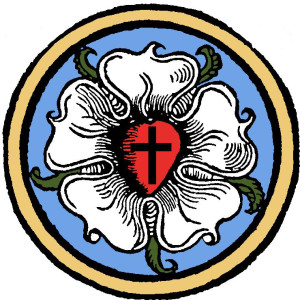
- Podcast Features
-
Monetization
-
Ads Marketplace
Join Ads Marketplace to earn through podcast sponsorships.
-
PodAds
Manage your ads with dynamic ad insertion capability.
-
Apple Podcasts Subscriptions Integration
Monetize with Apple Podcasts Subscriptions via Podbean.
-
Live Streaming
Earn rewards and recurring income from Fan Club membership.
-
Ads Marketplace
- Podbean App
-
Help and Support
-
Help Center
Get the answers and support you need.
-
Podbean Academy
Resources and guides to launch, grow, and monetize podcast.
-
Podbean Blog
Stay updated with the latest podcasting tips and trends.
-
What’s New
Check out our newest and recently released features!
-
Podcasting Smarter
Podcast interviews, best practices, and helpful tips.
-
Help Center
-
Popular Topics
-
How to Start a Podcast
The step-by-step guide to start your own podcast.
-
How to Start a Live Podcast
Create the best live podcast and engage your audience.
-
How to Monetize a Podcast
Tips on making the decision to monetize your podcast.
-
How to Promote Your Podcast
The best ways to get more eyes and ears on your podcast.
-
Podcast Advertising 101
Everything you need to know about podcast advertising.
-
Mobile Podcast Recording Guide
The ultimate guide to recording a podcast on your phone.
-
How to Use Group Recording
Steps to set up and use group recording in the Podbean app.
-
How to Start a Podcast
-
Podcasting
- Podcast Features
-
Monetization
-
Ads Marketplace
Join Ads Marketplace to earn through podcast sponsorships.
-
PodAds
Manage your ads with dynamic ad insertion capability.
-
Apple Podcasts Subscriptions Integration
Monetize with Apple Podcasts Subscriptions via Podbean.
-
Live Streaming
Earn rewards and recurring income from Fan Club membership.
-
Ads Marketplace
- Podbean App
- Advertisers
- Enterprise
- Pricing
-
Resources
-
Help and Support
-
Help Center
Get the answers and support you need.
-
Podbean Academy
Resources and guides to launch, grow, and monetize podcast.
-
Podbean Blog
Stay updated with the latest podcasting tips and trends.
-
What’s New
Check out our newest and recently released features!
-
Podcasting Smarter
Podcast interviews, best practices, and helpful tips.
-
Help Center
-
Popular Topics
-
How to Start a Podcast
The step-by-step guide to start your own podcast.
-
How to Start a Live Podcast
Create the best live podcast and engage your audience.
-
How to Monetize a Podcast
Tips on making the decision to monetize your podcast.
-
How to Promote Your Podcast
The best ways to get more eyes and ears on your podcast.
-
Podcast Advertising 101
Everything you need to know about podcast advertising.
-
Mobile Podcast Recording Guide
The ultimate guide to recording a podcast on your phone.
-
How to Use Group Recording
Steps to set up and use group recording in the Podbean app.
-
How to Start a Podcast
-
Help and Support
- Discover

When Jesus was arrested in the Garden of Gethsemane, He was quickly taken to the high priest, Caiaphas, and the ruling Jewish Council, the Sanhedrin (Mark 14:53). (Caiaphas was the actual high priest at this time, but his father-in-law, Annas, had been high priest for a long time earlier, and sometimes was also still called the high priest. See Acts 4:5-6. for example.)
Peter had run away with the other disciples when Jesus was arrested, but wanted to see what would happen to Jesus and followed to the outdoor courtyard around the place where the Sanhedrin met (Mark 14:54).
Several rules of the Jewish Council were being broken in this “trial” of Jesus. There were to be no night trials, but this trial was happening quickly, at night. There was to be an “indictment" with clear charges, before a person could be put on trial. At this meeting, the Council was still trying to come up with some charges, but was having trouble doing so (Mark 14:55). The verdict and punishment should not have been decided beforehand, but it had been (Mark 14:1-2). Also, the Old Testament required that there needed to be the agreement of at least two or three witnesses, before a person could be found guilty, and especially if there was the death penalty involved. (See Deuteronomy 17:6, 19:15-21, and Proverbs 19:9 and the 8th Commandment, Exodus 20:16.)
The testimony of witnesses about Jesus did not agree (Mark 14:56), and some misquoted and misunderstood Jesus and what He had said (Mark 14:57-59). (See the true account of John 2:18-22, early in Jesus’ ministry, when He “cleansed” the temple in Jerusalem for the first time.)
The high priest, Caiaphas, finally realized that he needed to step in and question Jesus. Jesus said nothing at first, fulfilling Isaiah 53:7 (Mark 14:60-61). (See the comment in 1 Peter 2:22-23, also.) When Caiaphus directly asked Jesus, though, if he was “the Christ, the Son of the Blessed” (the Son of God), Jesus answered, “I am." He used the same words which He had used so often before in His “I am” sayings - “I am the Bread of Life” (John 6:35), “I am the Way and the Truth and the Life” (John 14:6), and on and on. Jesus had even used the Old Testament name of God, (Exodus 3:13-14), “I am Who I am” and “I am” for Himself in John 6:56-58, too.) Jesus always spoke the truth (John 8:44-47).
He then quoted from Old Testament passages we have discussed before, saying that He was “the Son of Man” (Daniel 7:13) Who had been and would be “seated at the right hand of Power, of the Lord” (Psalm 110:1) and would come again “with the clouds of heaven” on the last day (Mark 13:26-27).
The immediate reaction of Caiaphas and the Council was to accuse Jesus of “blasphemy,” of speaking against God, in claiming that He was the “Christ, the Son of God,” the promised Savior. (Go back to that claim of Jesus and the Christian Church in Mark 1:1 and the comments made there, at the beginning of this Bible study.) This was a key, crucial truth of the Christian faith, but immediately rejected again by Caiaphas and the Jewish authorities. Caiaphus even tore his clothes, as a sign of how shocked and offended he was at this claim of Jesus. This was enough to condemn Jesus to die, Caiaphus and the Jewish authorities said (Mark 14:61-64).
They showed their outrage also by spitting on Jesus and hitting Him again and again and mocking Him and covering His face and daring Him to “prophesy” about who had struck Him (Mark 14:65). Again, this was a fulfillment of the prophecy of Jesus as the Suffering Servant in Isaiah 50:4-9, in the Old Testament. Jesus had predicted this Himself in Mark 10:33-34. The same kind of treatment would come also from the Roman authorities, Jesus said, as we see happening in Mark 15:15-20.
Meanwhile, Peter was in the courtyard outside, and a servant girl said to him, “You also were with the Nazarene, Jesus.” Peter denied that and pretended that he did not understand what the girl was claiming about him. He moved away from her, and a rooster crowed (Mark 14:66-68). That should have been a strong warning of what Jesus had predicted earlier that evening - that Peter would deny Jesus three times, before the rooster crowed twice (Mark 14:30-31).
The servant girl said again, “This man was one of them” and Peter denied it again. Finally, another said, “Certainly you are one of them, for you are a Galilean.” His accent, being from Northern Israel, where Jesus had been known to do much ministry, gave Peter away. Right away, Peter began to curse and swear, “I do not know this man”; and right away, the rooster crowed again. Peter then remembered what Jesus had said and how he had claimed he would even dies for Jesus. How badly he had failed.
Other Gospels tell us that he left the courtyard (Matthew 26:75) and as Mark tells us, “He broke down and began to weep” (Mark 14:70-72). The Greek verb indicates that he kept on weeping for quite some time. He was truly sorry, repentant, for what he had done. He did not end up, though, in total despair, as Judas had done. Later on, after the resurrection, Jesus forgave and strengthened him for future service to his Lord. This is good news for all of us, for things we have done, of which we are very ashamed, in the past. The mercy and forgiveness of Jesus are great! That is why He died for us all, for our forgiveness and new life, as He brings us to trust Him.
The Jewish authorities had a problem, though. They had condemned Jesus to die; but they were in a country occupied by the Romans and were not to put people to death themselves, though sometimes they did. (See Acts 7:51-60. Notice who it is that Stephen sees in a vision of heaven.) The leaders had to take Jesus to the Roman governor, Pontius Pilate (Mark 15:1).
The Jewish leaders accused Jesus of many things, but the only thing that concerned Pilate was whether Jesus was claiming to be a King who wanted to rebel and overthrow the Roman authority. Pilate asked, “Are you the King of the Jews?” Jesus simply said, “You have said so,” and gave him no other answers at this point (Mark 15:2-5). (Other Gospels tell us that there was other discussion; but Mark was satisfied, as God inspired him, just to make it clear that Pilate did not believe the Jewish authorities and did not see Jesus as a real threat to him. In fact, he tried to find ways to set Jesus free.)
Pilate had a custom of releasing a prisoner during the Passover feast. (Mark 15:6). He suggested that he was willing to release Jesus. He realized that the chief priests were trying to get rid of Jesus out of “envy” at His popularity with some of the people (Mark 15:8-10). The chief priests, however, used their influence to stir up many people in the passover crowds to be against Jesus and to ask for the release of Barabbas instead. Barabbas was a rebel and murderer and supporter of insurrection against the Roman government - the very opposite of a person Pilate would have been in favor of releasing (Mark 15:7,10,11). The crowds then cried out for Pilate to “Crucify” Jesus. Pilate even tried to defend Jesus, sensing that He was not an evil man at all; but the crowds kept shouting, “Crucify him” (Mark 15:12-14).
Pilate finally caved in to the pressure of the wishes of the crowd and the religious leaders. He released Barabbas and delivered Jesus up to be crucified. Pilate did one more thing. He had Jesus scourged. This was a unique Roman punishment. Jews used rods to give beatings. The Romans used whips with several leather lashes, with pieces of lead or lumps of bone attached. The skin and the flesh were gashed to the very bone of a person being beaten, in every direction where the lashes hit. It was a terrible beating (Mark 15:15).
Some think that Jesus died sooner than some expected, because of this beating before He was even nailed to the cross. This also might have been why Jesus was so weak that He could not carry His cross all the way to the place where He was crucified, as we will hear next week. Some also think that Pilate might have ordered this beating, hoping that people would see how weak and suffering Jesus then was and have sympathy and back off from calling for His crucifixion. It did not work, regardless of what Pilate might have intended.
Pilate also allowed his soldiers to do whatever they wanted with Jesus, before leading Him out to be crucified. The whole battalion was called in (as many as 600 soldiers, though probably a smaller group than that). They put an old purple robe on Him and a crown made of thorns and mocked Him, saying, “Hail, King of the Jews.” They struck His head with a reed, driving the thorns in deeper, and spit on Him. They knelt before Him in “mock” honor. Finally, they stripped off the purple robe and put his own clothes back on Him. One can only imagine the agony of that, after his earlier beating. Then, “they led Him out to crucify Him” (Mark 15:16-20).
Next week, we will hear of the crucifixion and death of Jesus, and Mark’s simple, short description of all that, as God inspired him to write it. Remember again that all He went through was for us and our forgiveness and salvation, available now for us and all the world. It was a very “bad” Friday for Jesus, but a very “Good Friday” for us.
More Episodes
 2025-12-24
2025-12-24
 1
1
 2025-12-14
2025-12-14
 4
4
 2025-12-12
2025-12-12
 4
4
 2025-12-01
2025-12-01
 4
4
 2025-11-26
2025-11-26
 3
3
 2025-11-20
2025-11-20
 7
7
 2025-11-13
2025-11-13
 9
9
 2025-11-06
2025-11-06
 11
11
 2025-10-30
2025-10-30
 7
7
 2025-10-30
2025-10-30
 6
6
 2025-10-23
2025-10-23
 8
8
 2025-10-16
2025-10-16
 13
13
 2025-10-16
2025-10-16
 8
8
 2025-10-09
2025-10-09
 7
7
 2025-10-02
2025-10-02
 10
10
 2025-09-25
2025-09-25
 5
5
 2025-09-25
2025-09-25
 5
5
 2025-09-19
2025-09-19
 8
8
 2025-09-09
2025-09-09
 9
9
 2025-09-04
2025-09-04
 7
7
Create your
podcast in
minutes
- Full-featured podcast site
- Unlimited storage and bandwidth
- Comprehensive podcast stats
- Distribute to Apple Podcasts, Spotify, and more
- Make money with your podcast
It is Free
- Privacy Policy
- Cookie Policy
- Terms of Use
- Consent Preferences
- Copyright © 2015-2025 Podbean.com




